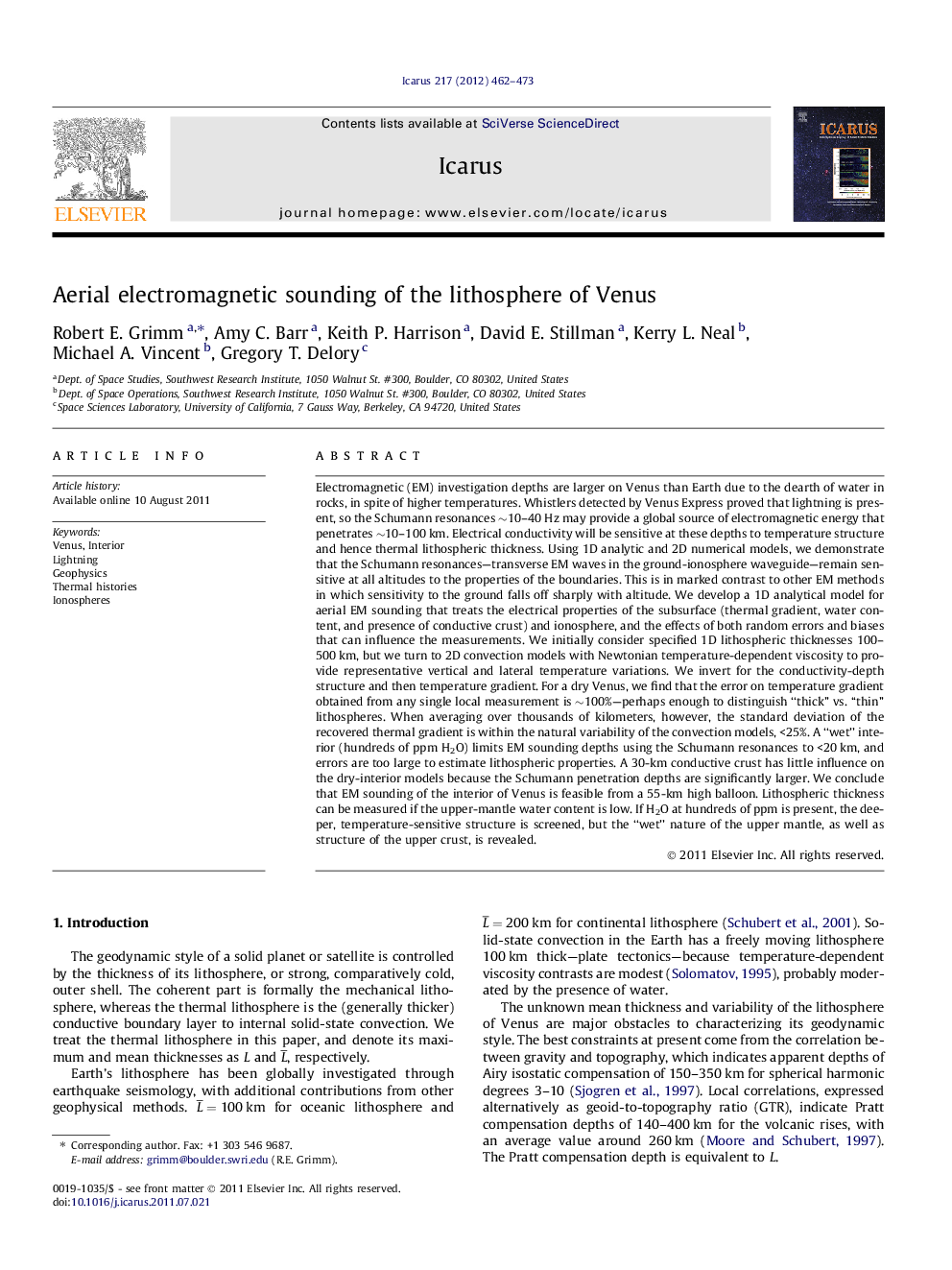| Article ID | Journal | Published Year | Pages | File Type |
|---|---|---|---|---|
| 1773674 | Icarus | 2012 | 12 Pages |
Electromagnetic (EM) investigation depths are larger on Venus than Earth due to the dearth of water in rocks, in spite of higher temperatures. Whistlers detected by Venus Express proved that lightning is present, so the Schumann resonances ∼10–40 Hz may provide a global source of electromagnetic energy that penetrates ∼10–100 km. Electrical conductivity will be sensitive at these depths to temperature structure and hence thermal lithospheric thickness. Using 1D analytic and 2D numerical models, we demonstrate that the Schumann resonances—transverse EM waves in the ground-ionosphere waveguide—remain sensitive at all altitudes to the properties of the boundaries. This is in marked contrast to other EM methods in which sensitivity to the ground falls off sharply with altitude. We develop a 1D analytical model for aerial EM sounding that treats the electrical properties of the subsurface (thermal gradient, water content, and presence of conductive crust) and ionosphere, and the effects of both random errors and biases that can influence the measurements. We initially consider specified 1D lithospheric thicknesses 100–500 km, but we turn to 2D convection models with Newtonian temperature-dependent viscosity to provide representative vertical and lateral temperature variations. We invert for the conductivity-depth structure and then temperature gradient. For a dry Venus, we find that the error on temperature gradient obtained from any single local measurement is ∼100%—perhaps enough to distinguish “thick” vs. “thin” lithospheres. When averaging over thousands of kilometers, however, the standard deviation of the recovered thermal gradient is within the natural variability of the convection models, <25%. A “wet” interior (hundreds of ppm H2O) limits EM sounding depths using the Schumann resonances to <20 km, and errors are too large to estimate lithospheric properties. A 30-km conductive crust has little influence on the dry-interior models because the Schumann penetration depths are significantly larger. We conclude that EM sounding of the interior of Venus is feasible from a 55-km high balloon. Lithospheric thickness can be measured if the upper-mantle water content is low. If H2O at hundreds of ppm is present, the deeper, temperature-sensitive structure is screened, but the “wet” nature of the upper mantle, as well as structure of the upper crust, is revealed.
► Lightning on Venus causes low-frequency electromagnetic resonances. ► For a dry Venus, these signals are sensitive to temperatures at depths up to 100 km. ► The responses can be measured from a balloon at clement altitudes. ► The thickness of the thermal lithosphere, which controls geodynamics, can be inferred.
